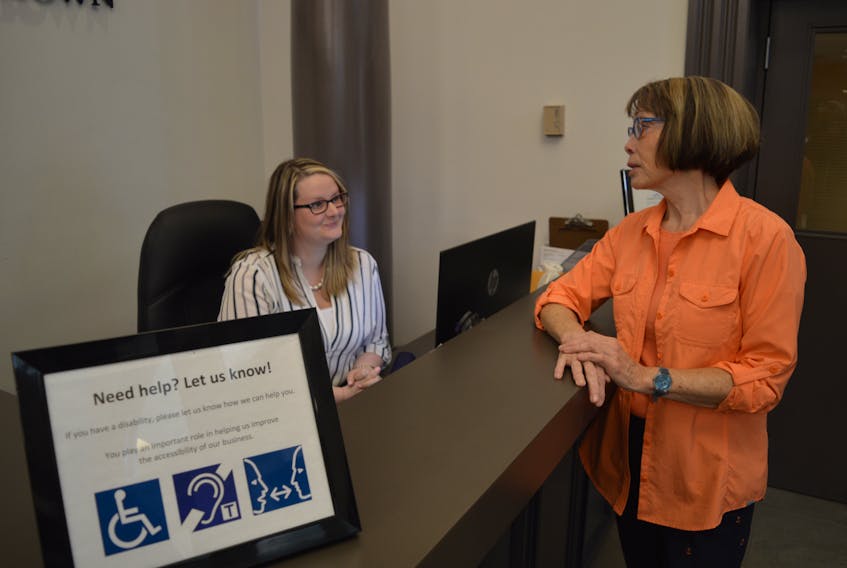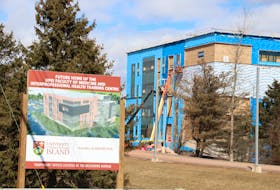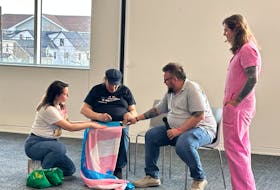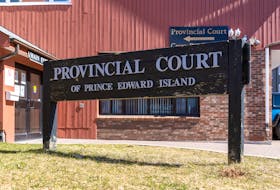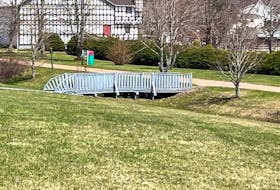The City of Charlottetown is turning up the volume at City Hall.
The city spent $6,500 to install technology to improve services to people with hearing loss.
The municipal building is now equipped with a hearing loop in council chambers, as well as counter loops at the main reception and billing desks. The loops allow those with hearing-assistive devices that have a telecoil to remove background noise and hear the person they are conversing with more clearly. The person will also be able to better hear whoever is speaking at city council meetings.
Brenda Porter, who is a member of the city’s board of persons with disabilities and has hearing loss herself, said she’s had a chance to sample the technology. Porter wears a hearing aid in both ears.
In the past, Porter has had problems attending committee meetings or council meetings held in council chambers.
“It could be a huge frustration because often there are also issues of lighting because I speech-read a lot. If the lighting is bad and I can’t see the speakers’ face . . . or I couldn’t see which councillor was speaking it would be very frustrating and I would miss much of what is being said.’’
Now, Porter says, the sound is clear and crisp.
“It’s as if I didn’t have any hearing loss,’’ Porter said. “You can come in (to council chambers) and as long as you have a certain component in your hearing aid activated, you don’t have to put on a headset or put on a necklace or do anything that announces to the world that ‘Hey, I’m hard of hearing’.’’
How it works
- The looping technology involves a wire looped around an area that feeds from audio equipment
- The sound travels through the wire to create a magnetic, wireless signal that is picked up by a cochlear implant, listening device or hearing aid when it is set to T (telecoil) setting
- Most hearing aids or cochlear implants have the telecoil setting already. In some cases, an audiologist may have to activate it
- The cost to the City of Charlottetown to install the technology was $6,500 but the technician’s expenses and educational component were paid for through a grant from the Canadian Hard of Hearing Association Foundation
She notes there are 15,000 people in the province with some form of hearing loss.
Daria Valkenburg, public relations and advocacy for the P.E.I. chapter of the Canadian Hard of Hearing Association, said this technology means more independence for those with hearing loss.
“No more asking someone to repeat something because now you can hear correctly the first time in a venue that meets the international standard for greater sound clarity and uniform loudness throughout a looped area,’’ Valkenburg said.
City Hall is one of three buildings on P.E.I. now outfitted with the technology. The South Shore United Church in Tryon and the West River United Church in Cornwall are also equipped.
Porter added there are now two people on P.E.I. trained to install the technology, which could mean good things for the future.

